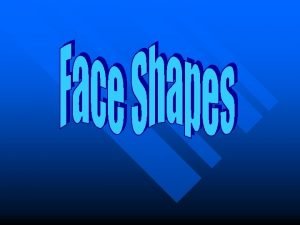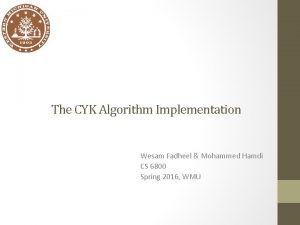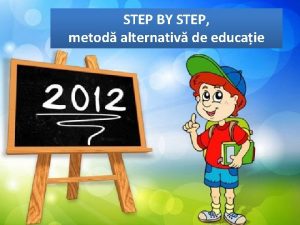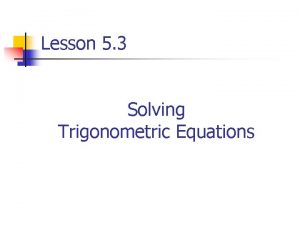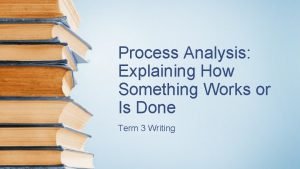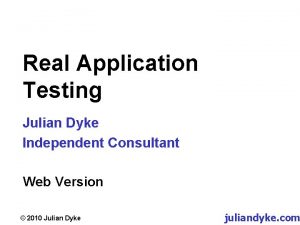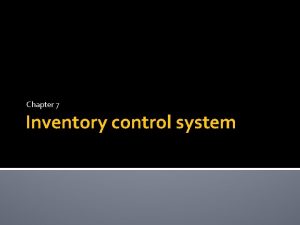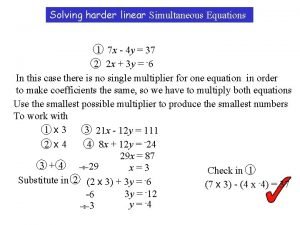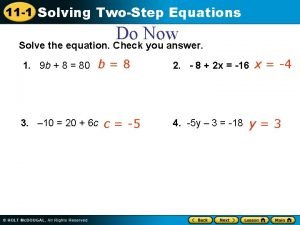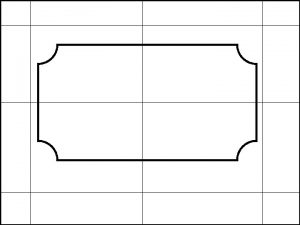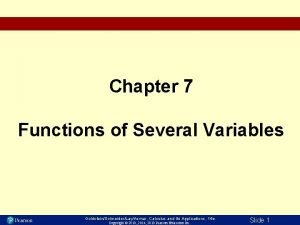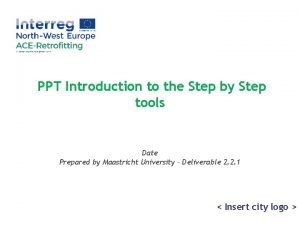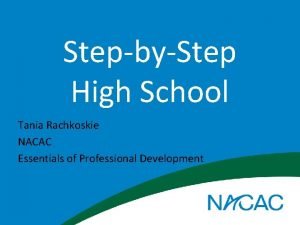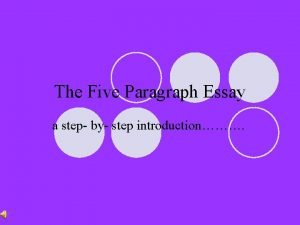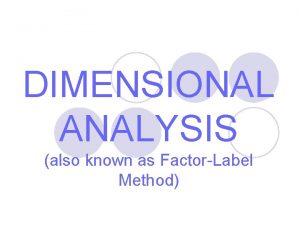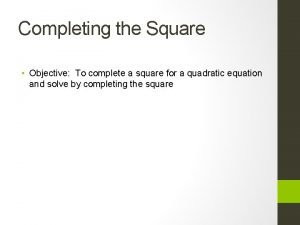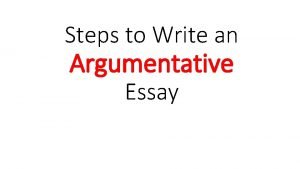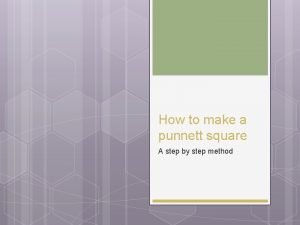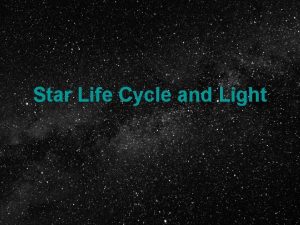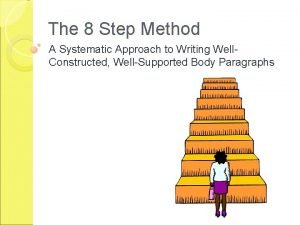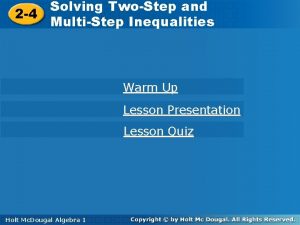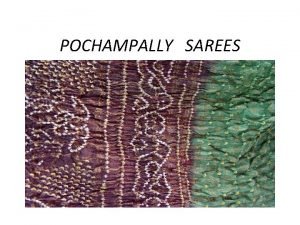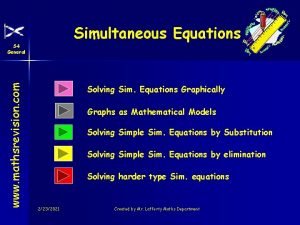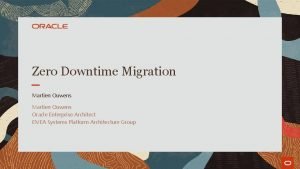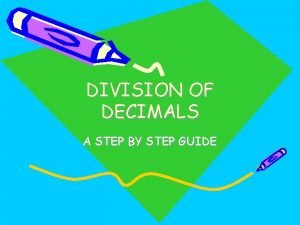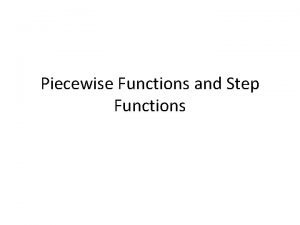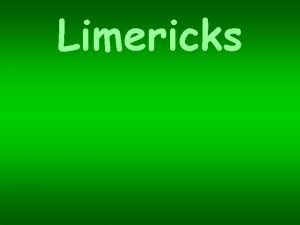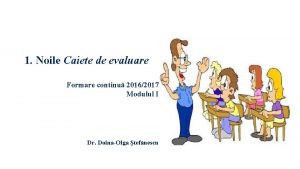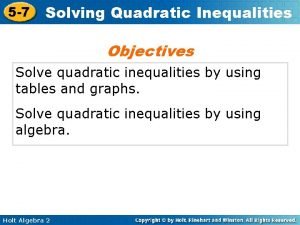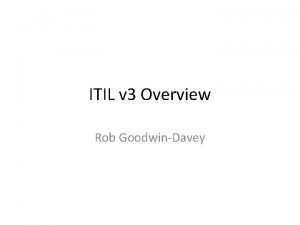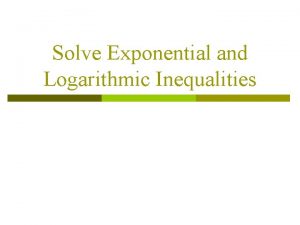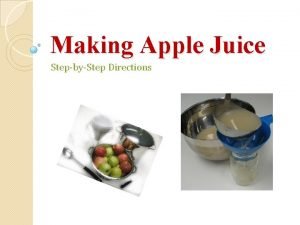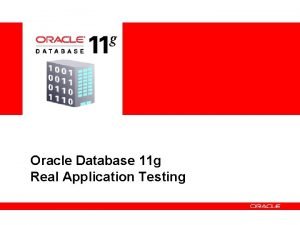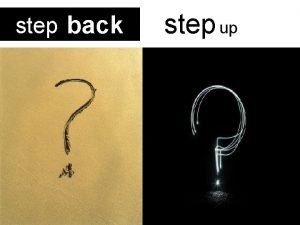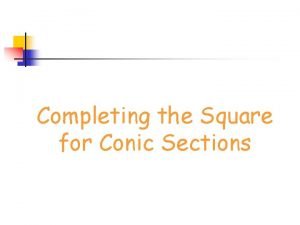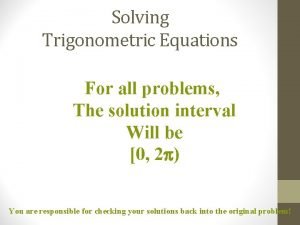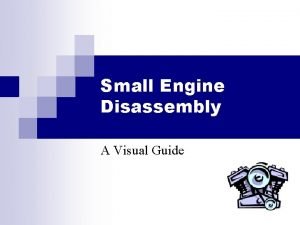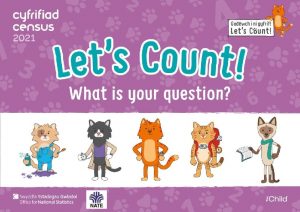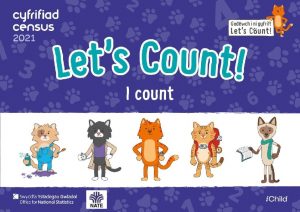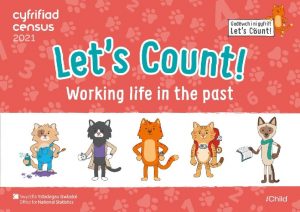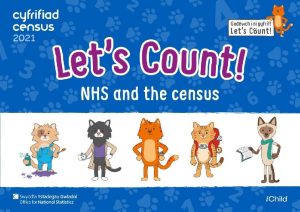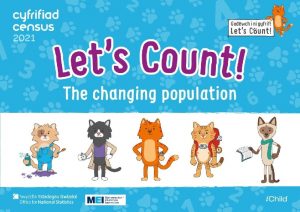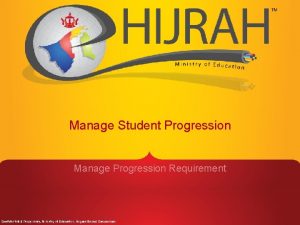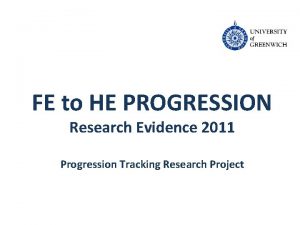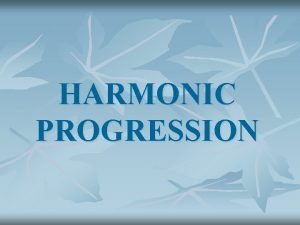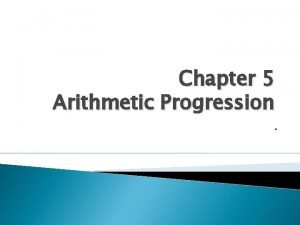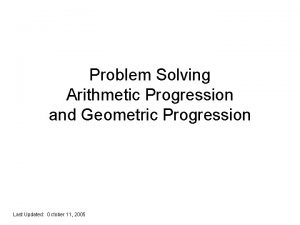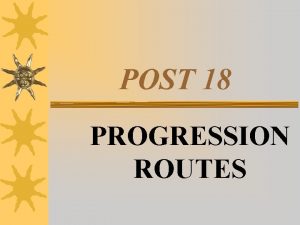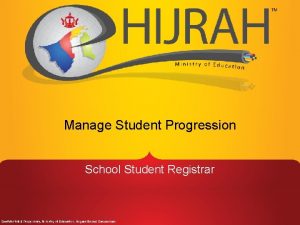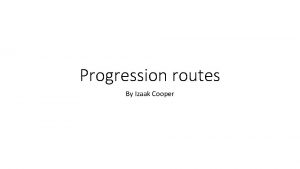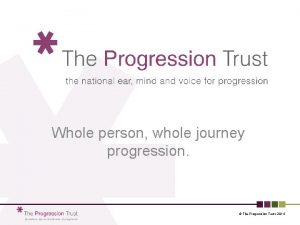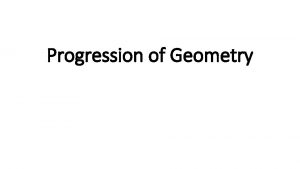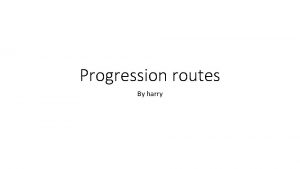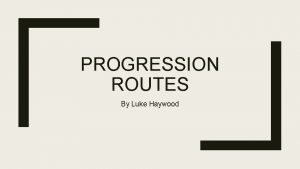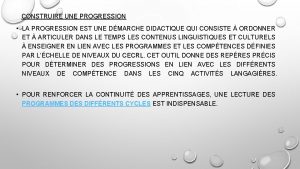Progression step 1 Progression step 2 What is


















































- Slides: 50


Progression step 1 Progression step 2 What is the census? Asking and answering questions

What is the census? Who has heard of the census? Who knows what the census is?

What is the census? The census is a count of all the people in Wales and England. It happens every 10 years. It asks lots of questions such as: Where do people live? What jobs do they do? Which languages do they speak? How many cars do they own?

What is the census? Why does the census ask these questions? The census asks all these questions so that we know how many people there are.

What is the census? Can we go to the park? No. There isn’t a park near our house. The census can show that there are more children living here now who need a park.

EYFS and Key Stage 1 What is the census? Can we go swimming? Yes. There is a swimming pool here! Perhaps a previous census showed people needed a swimming pool, and so they built one!

What is the census? How does the census help us? The census helps us make sure there are enough things like schools and hospitals in the places where people will need them.

What is your favourite snack? Snack Total

Oh dear! Is this a good way to organise the snacks we’ve chosen? Shall we find a better way? Snack Total

How about this? Let’s count them together! Snack Apple Carrot Banana Satsuma Grapes Total

This looks better and makes counting the fruit easier! Now we can count up our favourite snacks. Which is the favourite? Snack Total 4 Apple 3 Carrot 2 Banana 1 Satsuma 5 Grapes

What will we count next? Text Total Text 0 Text 0

Years 3 and 4 What is the census? Asking and Who has heard answering of the census? questions Who knows what the census is?

What is the census? The census is a count of all people and households in Wales and England. The last census was held on 27 March 2011. The next census is on 21 March 2021. A census has been held throughout Wales and England every 10 years since 1801 (apart from in 1941 due to the Second World War). The census is run by the Office for National Statistics (ONS).

What is the census? The census is special because it asks everyone the same questions on the same day. It asks questions such as: Where do people live? What jobs do they do? Which languages do they speak? How many cars do they own?

What is the census? How does this help us? This helps us make sure there are enough things like schools and hospitals in the places where people will need them.

What is the census? The census can also help us to find out about life in the past.

What is the census? The numbers below come from children counted in one area in the last census. Children who are 10 now will have been counted in the last census. If you’re younger than 10, the census in 2021 will be the first census that will count you! Ages of Children From Census 2011 Children aged 0 to 4 years 387 Children aged 5 to 7 years 227 Children aged 8 to 9 136 Children aged 10 - 14 401

What is the census? What do we notice? Are all the groups the same size? Some groups have more ages, that could be why the numbers are bigger. Ages of Children From Census 2011 Children aged 0 to 4 years 387 Children aged 5 to 7 years 227 Children aged 8 to 9 136 Children aged 10 - 14 401

What is the census? Let’s count the children in this area from the last two censuses. Which group has fewer? Which have more? Which shows the biggest change? Ages of Children From Census 2001 From Census 2011 Children aged 0 to 4 years 370 387 Children aged 5 to 7 years 240 227 Children aged 8 to 9 154 136 Children aged 10 - 14 376 401

What is the census? Some numbers have increased. Can you see which ones? Some have decreased. Can you see which ones? No numbers stayed the same. Which had the biggest change? Ages of Children From Census 2001 From Census 2011 Children aged 0 to 4 years 370 387 Children aged 5 to 7 years 240 227 Children aged 8 to 9 154 136 Children aged 10 - 14 376 401

What is the census? What do you think will happen in the next census? Ages of Children From Census 2001 From Census 2011 Children aged 0 to 4 years 370 387 Children aged 5 to 7 years 240 227 Children aged 8 to 9 154 136 Children aged 10 - 14 376 401 From Census 2021

What is the census? Here is the same census information presented in bar charts. Is it easier to see information in this way? Which group had the biggest difference? Comparing ages in 2001 and 2011 450 400 350 300 250 200 150 100 50 0 Age 0 to 4 Age 5 to 7 2001 Age 8 to 9 2011 Age 10 to 14

What is the census? Let’s look again at children aged 0 -4. If a child was 4 in 2001, how old will they be in 2011? Ages of Children From Census 2001 From Census 2011 Children aged 0 to 4 years 370 387 Children aged 5 to 7 years 240 227 Children aged 8 to 9 154 136 Children aged 10 - 14 376 401

What is the census? Why are there more children now? They must have been born somewhere else in 2001, and moved to this area before the census in 2011. Ages of Children From Census 2001 From Census 2011 Children aged 0 to 4 years 370 387 Children aged 5 to 7 years 240 227 Children aged 8 to 9 154 136 Children aged 10 - 14 376 401 What do you notice?

What is the census? Let’s use our census data to create a bar chart. What do you think this change in the number of children age 10 – 14 might mean? Comparing numbers as we grow up 450 400 350 300 250 200 150 100 50 0 The same children? Age 0 - 4 2001 Age 10 - 14 2011

What is the census? What do children aged 10 to 14 like to do? What can this information help us to do? How does the local area need to change? What would you suggest?

What is the census? Design a poster to show what you think the area needs for these extra children Write a letter explaining why you think a new park or sports centre is needed Make a leaflet to show why this is a good area for families and children Think about your audience – who are you writing for?

Years 5 and 6 What is the census? Who has heard of the census? Who knows what the census is?

What is the census? The census is a count of all people and households in Wales and England. The last census was held on 27 March 2011. The next census will be held on Sunday 21 March 2021. A census has been held throughout Wales and England every 10 years since 1801 (apart from in 1941 due to the Second World War).

What is the census? In 3800 BC the Babylonian Empire (who lived in what we now call Iraq) took the first known census. They counted livestock and quantities of butter, honey, milk, wool, and vegetables.

What is the census? The Romans used a census to assess the population and work out how much tax they could raise. The word assess or assessing came from a Latin word, and in the olden days meant to ‘fix to the amount’. So it’s linked to the origin of the word census!

What is the census? William the Conqueror created the Doomsday Book in 1085 to find out how much tax he could raise across the country.

What is the census? Mary and Joseph went to Bethlehem to be counted in a census.

What is the census? The census gives a detailed picture of the population. It is unique because it covers everyone at the same time and asks the same core questions everywhere. This makes it easy to compare different parts of Wales and England.

What is the census? The census is run by the Office for National Statistics (ONS) The ONS prepares all the important questions. Then the ONS analyses statistics about the nation’s population, society and economy. Their job is vital!

What is the census? The census information is used by central and local government, health authorities and many other organisations. It helps them to plan important services across the country, such as: Housing Schools Hospitals and doctors Buses and roads These plans will helps us prepare for the next 10 years.

What is the census? The census can also help us to find out about life in the past.

What is the census? Let’s count the population in one area in 2011. What is this data telling us? Why might the ages be grouped in this way? School Local Area Population From Census 2011 Children aged 0 to 17 years 1, 387 Adults aged 18 to 29 years 865 Adults aged 30 to 44 1, 440 Adults aged 45 to 64 1, 920 Adults aged 65 and over 1, 398

What is the census? What do you think this data tells us about what has happened between the two censuses? School Local Area Population From Census 2001 From Census 2011 Children aged 0 to 17 years 1, 340 1, 387 Adults aged 18 to 29 years 784 865 Adults aged 30 to 44 1, 469 1, 440 Adults aged 45 to 64 1, 533 1, 920 Adults aged 65 and over 1, 331 1, 398

What is the census? What do you think the numbers will be in the next census? What about in another 10 years? School Local Area Population From Census 2001 From Census 2011 Children aged 0 to 17 years 1, 340 1, 387 Adults aged 18 to 29 years 784 865 Adults aged 30 to 44 1, 469 1, 440 Adults aged 45 to 64 1, 533 1, 920 Adults aged 65 and over 1, 331 1, 398 From Census 2021 From Census 2031

What is the census? What do we notice about this information? Do we think the numbers would be the same today? What are our reasons? Do we think the numbers would be the same 40 years ago? What do we think the numbers will be 20 years in the future?

What is the census? Let’s use census 2011 data to create charts and graphs. Comparing population data in 2001 and 2011 2000 1800 1600 s tion s e u at q ou like h W ld y wou o ask? t 1400 1200 1000 800 600 400 200 0 0 - 17 18 - 29 30 - 44 2001 2011 45 - 64 65 + What do you notice?

What is the census? Let’s use census 2011 data to create charts and graphs. Comparing population data in 2001 and 2011 2000 1800 more people aged 45 – 64 in 2011 than 2001? 2. What happens when people get to age 65 in this area? 1600 1400 3. Can we say that most people who live here in 2011 are between 30 and 64? 1200 1000 4. What happens when people get to 18 here? 800 600 5. What sort of place do you think this might be? 400 200 0 1. Why are there so many 0 - 17 18 - 29 30 - 44 2001 2011 45 - 64 65 +

What is the census? What can we do with this information? What do you think is changing in the area? How could you share this information with others? You could design a poster using images and graphs to show the population is changing? You could write a letter explaining what changes will be needed in the next 10 years. You could write a letter explaining what you would like to see and use the data to support your argument. You could design a poster to show important it is to fill in the census.

What is the census? This is an example of an infographic. It is a way of showing what is happening using pictures and easy to read graphs. There is not too much to read but the information is clear. Could you create something like this to share your information with others?

What is the census? In your research and writing, remember to: Identify the audience for and purpose of the writing. Select the appropriate form and use other similar writing as models for your own. Select appropriate grammar and vocabulary, and understand how your choices can change and enhance meaning. Use a wide range of devices to build cohesion within and across paragraphs.

What is the census? Useful links How to access 2011 and 2001 census data at Nomis (please refer to the user guide provided) https: //letscount. org. uk/resources-forteachers/access-local-census-data/ What is the census? More detail on the last census in 2011 (from the Office for National Statistics) www. ons. gov. uk/census/2011 census 2011 census: Key Statistics for England Wales www. ons. gov. uk/peoplepopulationandcommunity/po pulationandmigration/populationestimates/bulletin s/2011 censuskeystatisticsforenglandandwales/201 2 -12 -11 More information on much older census records at the National Archives www. nationalarchives. gov. uk/help-with-yourresearch/research-guides/census-records/ Find out about the census: What is its history and purpose? Gather your findings in an information text. Use the Nomis website to search a database. Then include key data about the school’s local area.

 Step 1 step 2 step 3 step 4
Step 1 step 2 step 3 step 4 Linda evangelista face shape
Linda evangelista face shape Bronchoscopy step by step
Bronchoscopy step by step Dr cyk
Dr cyk Agenda zilei step by step
Agenda zilei step by step Fabric process step by step
Fabric process step by step тригонометрические уравнения
тригонометрические уравнения How something works example
How something works example Julian dyke
Julian dyke Step-by step inventory process
Step-by step inventory process Linear equation solver with steps
Linear equation solver with steps Jamie tried to solve an equation step by step.
Jamie tried to solve an equation step by step. Function and graph
Function and graph Steps involved in portfolio management process
Steps involved in portfolio management process How to draw a compass rose step by step
How to draw a compass rose step by step Lagrange multiplier calculator step by step
Lagrange multiplier calculator step by step Step by step tools
Step by step tools Inbound proxy in sap abap
Inbound proxy in sap abap Tania rachkoskie
Tania rachkoskie Particle filter example step by step
Particle filter example step by step Step by step introduction paragraph
Step by step introduction paragraph Dimensional analysis is also known as
Dimensional analysis is also known as Step by step completing the square
Step by step completing the square Steps of an argumentative essay
Steps of an argumentative essay Punnett square steps
Punnett square steps Life cycle of a star video
Life cycle of a star video Step-by-step method
Step-by-step method Solve two step inequalities
Solve two step inequalities How to draw a water tower step by step
How to draw a water tower step by step Write the process of making pochampally sarees
Write the process of making pochampally sarees Is it balanced
Is it balanced Simultaneous equations step by step
Simultaneous equations step by step Incisal labiality
Incisal labiality Oci ssh
Oci ssh How to divide decimals step by step
How to divide decimals step by step How to solve piecewise functions step by step
How to solve piecewise functions step by step Flush terminal plane
Flush terminal plane Limerick poem examples
Limerick poem examples Caiet de evaluare step by step
Caiet de evaluare step by step 5 example of quadratic inequalities
5 example of quadratic inequalities Step 1 in 7 step improvement process
Step 1 in 7 step improvement process Step one denial step two
Step one denial step two Solving exponential inequality
Solving exponential inequality Describe the process of preparing apple juice in 5 steps
Describe the process of preparing apple juice in 5 steps Oracle real application testing
Oracle real application testing Step up step back
Step up step back Chapter 22 milady test
Chapter 22 milady test Step by step completing the square
Step by step completing the square How to solve trigonometric equations step by step
How to solve trigonometric equations step by step How to use viva video
How to use viva video Small gas engine disassembly procedures
Small gas engine disassembly procedures

